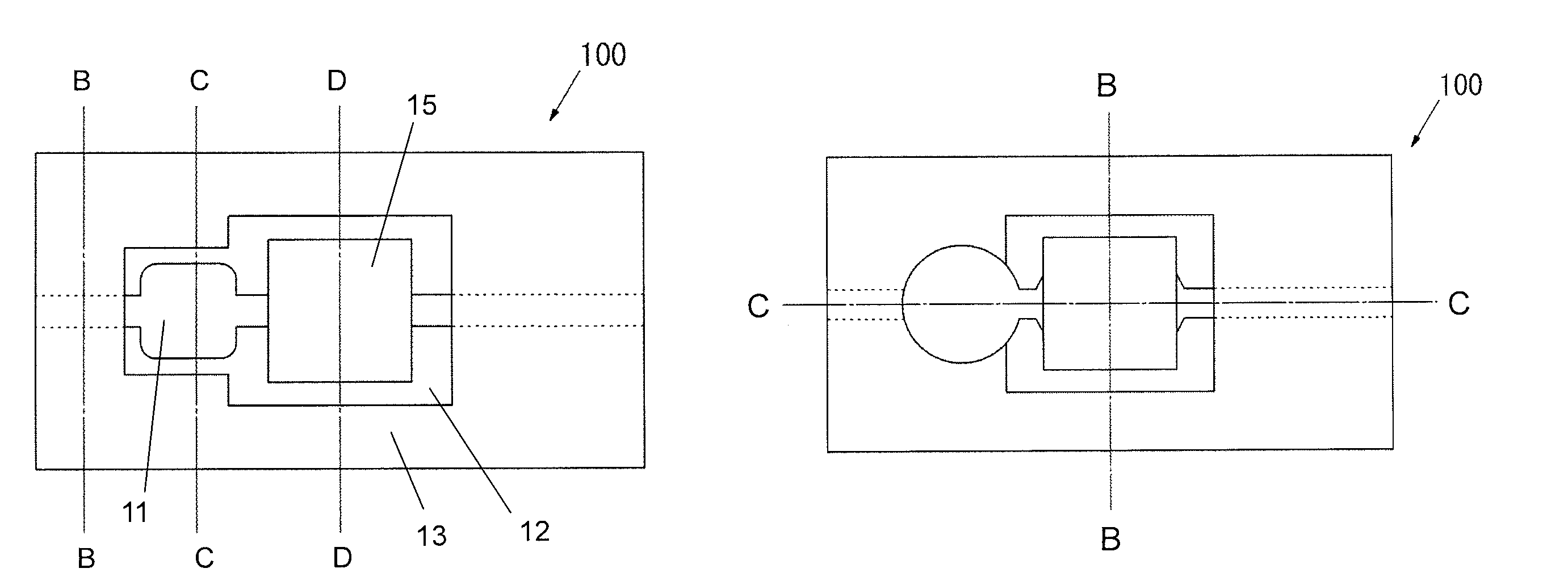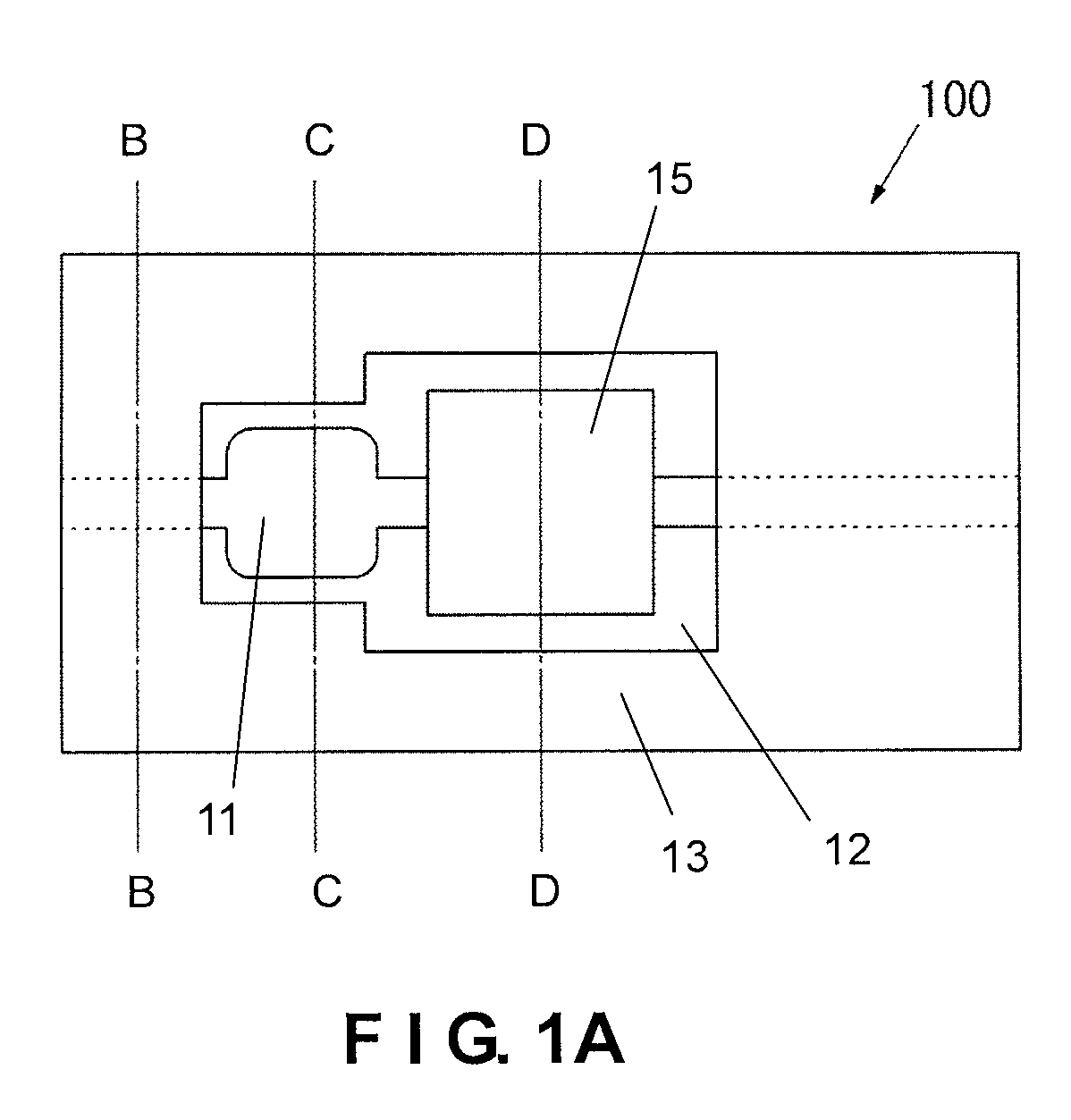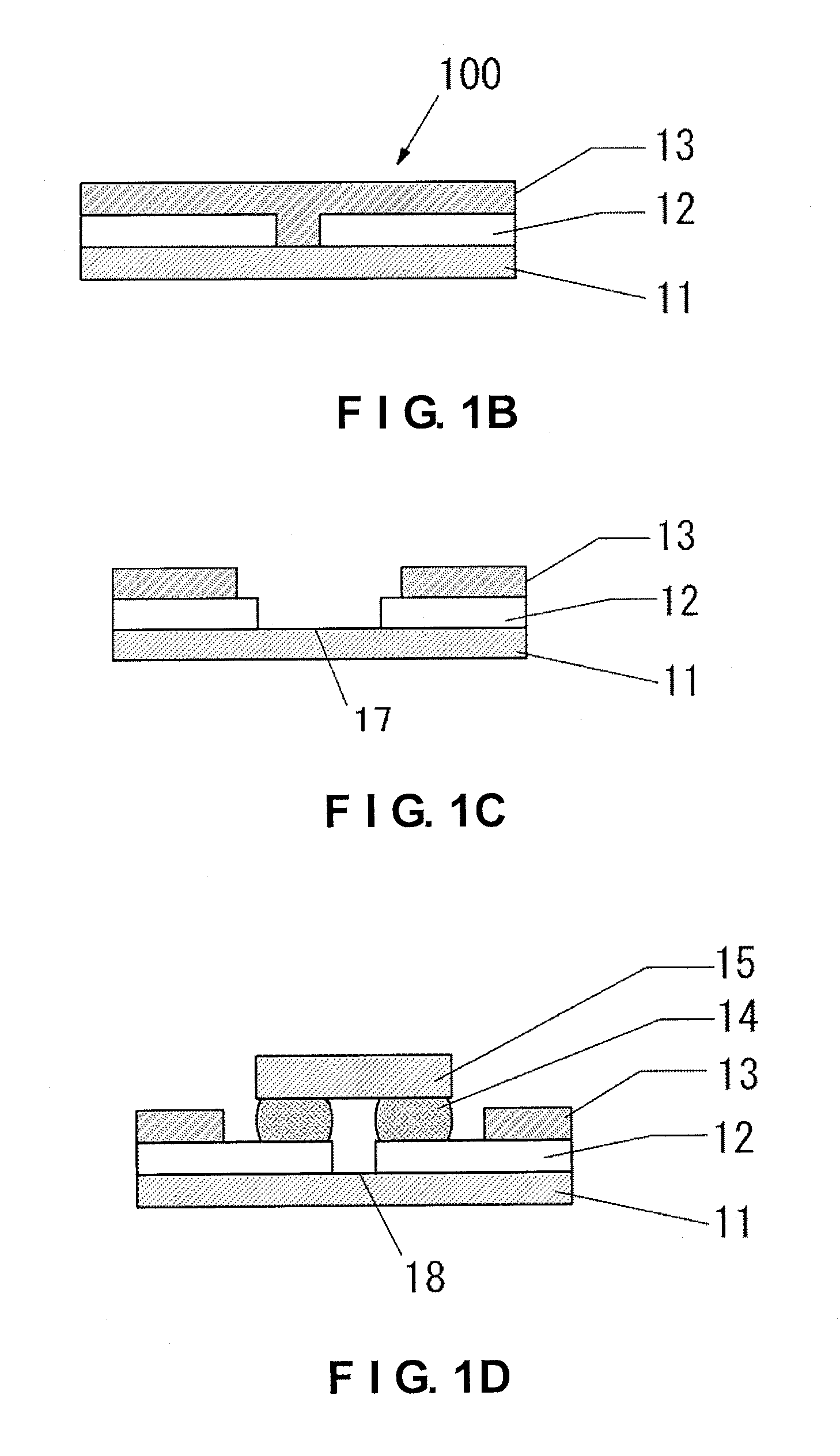Light emitting device and method of manufacturing the same
a technology of light emitting devices and manufacturing methods, which is applied in the direction of semiconductor devices, basic electric elements, electrical apparatus, etc., can solve the problems of reducing the size of the space formed between the face-down mounted light emitting element and the support member is rather small, and the light extracting efficiency of the light emitting device can be reduced. , the area of the light extracting surface of the light emitting element can be increased, and the effect o
- Summary
- Abstract
- Description
- Claims
- Application Information
AI Technical Summary
Benefits of technology
Problems solved by technology
Method used
Image
Examples
example 1
[0085]FIG. 1A is a top view showing a support member of a light emitting device according to the present embodiment. FIGS. 1B, 1C, and 1D are respectively cross-sectional views taken along lines B-B, C-C, and D-D shown in the top view of FIG. 1A respectively.
[0086]As shown in FIGS. 1A to 1D, the support member of the present example includes an underfill arranging portion 17 in a part of a pattern of a pair of positive and negative electrically conductive wirings disposed on the support member. More specifically, on a polyimide film having a thickness of 25 μm which is an insulating member constituting the support member, a copper foil having a thickness of 35 μm is adhered by using an adhesive agent, then, portions of the surface of the adhesive agent or the insulating member so that the copper foil becomes the electrically conductive wirings having a predetermined pattern, and thus the insulating separation portion which includes the underfill wirings portions 17 is formed. Then, ...
example 2
[0092]FIG. 5 is a top view showing a support member of a light emitting device according to the present embodiment. The light emitting device is fabricated in a similar manner as in Example 1, except for that to be described below. The electrically conductive wirings 112 according to the present example includes a protruded portion 112a having a width which is approximately the same as the width of the light emitting element, and the underfill arranging portion is provided adjacent to the protruded portion. That is, as shown in FIG. 5, in the present example, a part of each of the pair of positive and negative electrodes disposed on the support member is formed with a protruded portion having a width approximately the same as the width of the corresponding electrode of the light emitting element 15. In the protruded portions 112a, invisible portions which are hidden behind the light emitting element 15 are shown in dotted lines in FIG. 5. Then, the underfill arranging portion 117 is...
PUM
 Login to View More
Login to View More Abstract
Description
Claims
Application Information
 Login to View More
Login to View More - R&D
- Intellectual Property
- Life Sciences
- Materials
- Tech Scout
- Unparalleled Data Quality
- Higher Quality Content
- 60% Fewer Hallucinations
Browse by: Latest US Patents, China's latest patents, Technical Efficacy Thesaurus, Application Domain, Technology Topic, Popular Technical Reports.
© 2025 PatSnap. All rights reserved.Legal|Privacy policy|Modern Slavery Act Transparency Statement|Sitemap|About US| Contact US: help@patsnap.com



